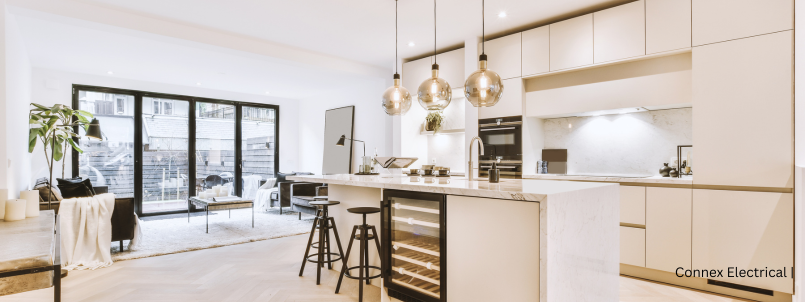Proper lighting design can transform your home, enhancing both its aesthetics and functionality. From setting the perfect ambiance to ensuring adequate illumination for tasks, our 6-step guide will help you create a well-lit, energy-efficient space tailored to your needs.
Why Is Home Lighting Important?
Lighting is more than just a necessity; it influences your mood, productivity, and the overall feel of your home. Well-planned lighting can make spaces appear larger, highlight architectural details, and even improve energy efficiency.
Understand the Three Layers of Lighting
A balanced lighting scheme integrates these three layers:
- Ambient Lighting: The primary source of illumination, such as ceiling fixtures or chandeliers, provides general light for the entire room.
- Task Lighting: Focused lighting for specific activities like reading, cooking, or working. Examples include under-cabinet lights and desk lamps.
- Accent Lighting: Decorative lighting that highlights specific features like artwork, plants, or architectural elements.
For more tips on stylish and functional lighting, check out our Top 7 Home Lighting Tips.
6 Steps to Plan Your Home Lighting
1. Assess Each Room’s Purpose
Start by determining the primary activities in each room. A kitchen may require bright task lighting over the counter, while a bedroom might benefit from dimmable ambient lights for relaxation.
2. Maximize Natural Light
Take advantage of natural light by placing mirrors strategically to reflect daylight and brighten spaces. This reduces reliance on artificial lighting during the day and can save on energy costs. For energy-saving tips, explore our 7 Simple Tips to Save Money on Your Electrical Bill.
3. Layer Your Lighting
Combine ambient, task, and accent lighting to create depth and functionality. For instance, in a living room, use a chandelier (ambient), reading lamps (task), and wall-mounted fixtures (accent).
4. Choose the Right Fixtures
Select fixtures that align with the room’s style and purpose. For brighter, energy-efficient options, consider LED lights. For guidance on LED lighting, check our LED vs. Halogen Downlights Guide.
5. Consider Room Colors and Materials
Dark walls absorb light, making a room feel smaller, while lighter shades reflect light, creating an open atmosphere. Adjust your lighting intensity accordingly to balance the effect.
6. Use Dimmers for Flexibility
Dimmers let you adjust the brightness, creating the perfect ambiance for any occasion. They’re ideal for bedrooms, dining rooms, and living spaces.
Additional Tips for Effective Lighting Design
- Prioritize Energy Efficiency: Choose energy-saving fixtures like LEDs and solar-powered options. Learn more in our How Solar Panels Transform Sunlight Into Energy.
- Incorporate Smart Lighting: Modern smart systems let you control lighting remotely or automate brightness based on the time of day.
- Ensure Electrical Safety: Regularly test your electrical system to prevent hazards. See our Electrical Test and Tag Guide for workplace safety tips that apply to homes too.
Conclusion
Planning your home lighting doesn’t have to be overwhelming. With the right strategy, you can achieve a beautifully illuminated space that enhances comfort, efficiency, and style. If you’re ready to upgrade your home lighting or need expert advice, Connex Electrical is here to help. Contact us today to bring your lighting vision to life!
Contact Us for Your Electrical Services in Brisbane, North Brisbane Suburbs
Name: Connex Electrical
Address: 173 Campbell Drive, Mango Hill, Queensland 4509
Phone: 0474 207 609

